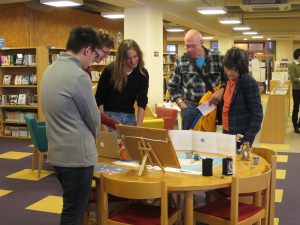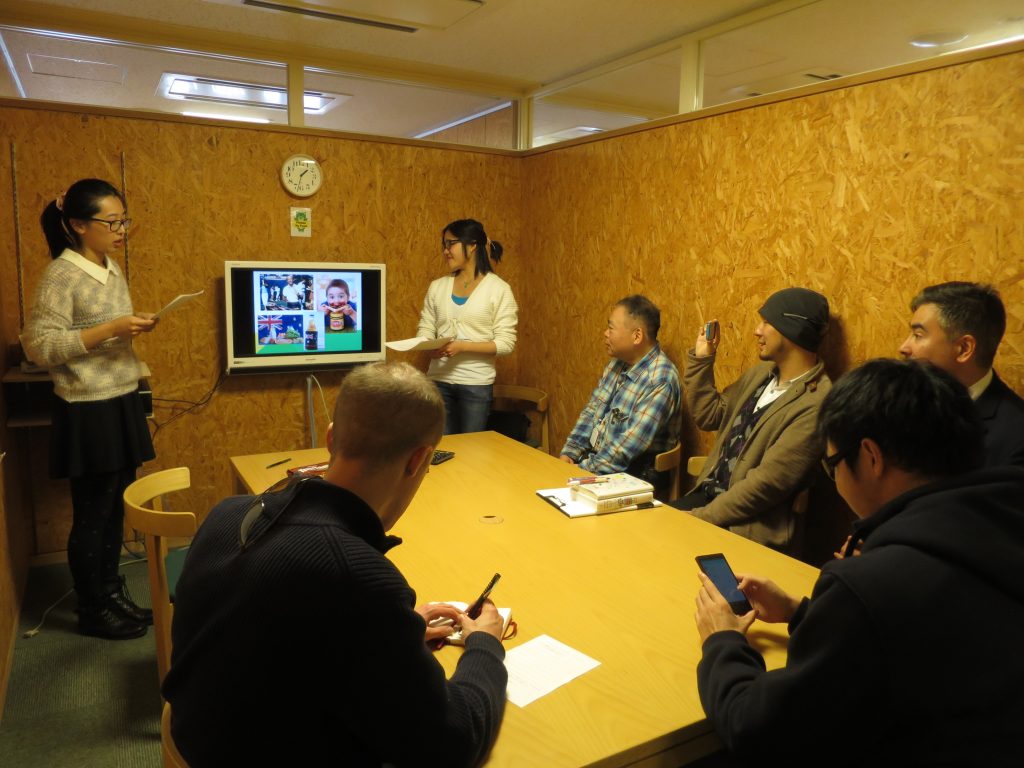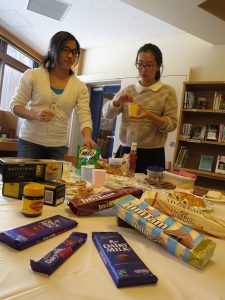Information
Students Hold “Australia Day” to Introduce Culture, Practice Japanese
The ANU students are all upper-intermediate to advanced Japanese language speakers, near the end of their study program at AIU. Despite the pressure of several professors, staff, and fellow students from Japan and around the world, they gave confident, detailed presentations in Japanese, going beyond the surface of tourist-level culture to explain concepts that many outsiders would not otherwise understand.
At the aboriginal culture display table, one student explained the breathing pattern required to play the didgeridoo then moved into an explanation of the aboriginal creation myth of the Rainbow Serpent. Without missing a beat, he then fielded a question about a touristy “Koalas Crossing, Next 80 km” keychain by joking that in Australia, 80 km is just a drive to the supermarket.In the multipurpose rooms, the in-depth presentations covered six topics: Food Culture, Language, Aboriginal Culture, Terrestrial Environment, Aquatic Environment, and Basic Introduction to Australia. Two students presented on each topic, with three presentations going on at any time. It was easy to see how much work the students had put into the preparation, from their detailed notes and scripts to their use of visual aids and clear delivery. You could almost forget that they were second-language speakers, at least until they mixed in English phrases with Australian-accented pronunciation, as when explaining the cultural significance of Vegemite advertising campaigns.
If there was one downside to the presentation, it was that there was just too much interesting information for a single attendee to take in over the three-hour event. Still, it was a wonderful opportunity both for the students to practice their Japanese and for the rest of the university to learn fascinating details about a new culture.
The ANU students are all upper-intermediate to advanced Japanese language speakers, near the end of their study program at AIU. Despite the pressure of several professors, staff, and fellow students from Japan and around the world, they gave confident, detailed presentations in Japanese, going beyond the surface of tourist-level culture to explain concepts that many outsiders would not otherwise understand.
At the aboriginal culture display table, one student explained the breathing pattern required to play the didgeridoo then moved into an explanation of the aboriginal creation myth of the Rainbow Serpent. Without missing a beat, he then fielded a question about a touristy “Koalas Crossing, Next 80 km” keychain by joking that in Australia, 80 km is just a drive to the supermarket.In the multipurpose rooms, the in-depth presentations covered six topics: Food Culture, Language, Aboriginal Culture, Terrestrial Environment, Aquatic Environment, and Basic Introduction to Australia. Two students presented on each topic, with three presentations going on at any time. It was easy to see how much work the students had put into the preparation, from their detailed notes and scripts to their use of visual aids and clear delivery. You could almost forget that they were second-language speakers, at least until they mixed in English phrases with Australian-accented pronunciation, as when explaining the cultural significance of Vegemite advertising campaigns.
If there was one downside to the presentation, it was that there was just too much interesting information for a single attendee to take in over the three-hour event. Still, it was a wonderful opportunity both for the students to practice their Japanese and for the rest of the university to learn fascinating details about a new culture.




